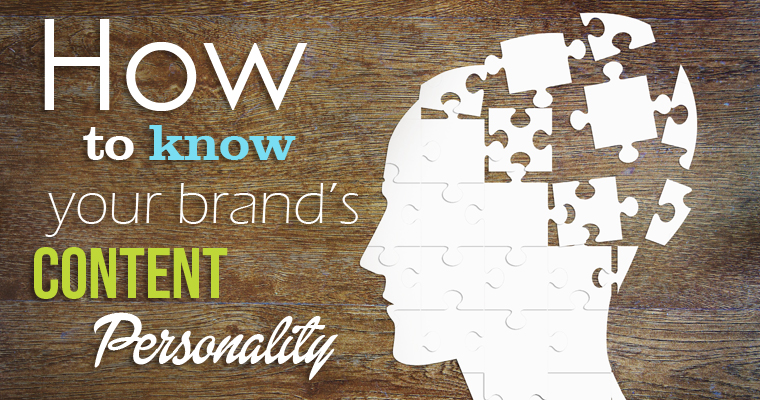Personality. How do you define it? Look it up in the dictionary and you might see “the visible aspect of one’s character as it impresses others,” or “an embodiment of a collection of qualities”.
What does a personality do? How exactly does it work? In a nutshell, it can immediately attract you to someone or turn them off to you.
Not every personality is for everyone, that’s for sure. Each one has very unique strengths and challenges. And they’re not just for people. Brands have personalities, too—or at least they should. In fact, I’d like to argue that a brand is a personality.
Nike isn’t a sports apparel manufacturer. Starbucks isn’t a coffee brewer. Apple isn’t a computer maker. There is something far more emotive to who and what these companies are. For each one, their brands touch people at very root levels of their beings. Nike is a maker of dreams and champions. Starbucks is a community. Apple inspires creativity and innovation.
Make no bones about it, people buy products from these companies largely in part of their personalities, not just because of the products themselves.

A Look in the Mirror
So, when you look at your own marketing and branding efforts, what do you see? A lot of hard work producing some of the most amazing thought-leadership content out there in your industry? A marketing strategy and plan that should be heralded as the gold standard? Innovative products and services? But do you also see less-than-stellar results and somewhat weak brand recognition?
Wait…stop right there…what’s that last one again? When you have great content, great product/service offers, and a picture-perfect marketing strategy, but you’re still not getting results, you’ve got to take a look at your brand’s content personality. You either have a poor personality or poor communication of a good personality.
The Personality Differentiator
The personality differentiator is actually a marketing industry term that refers to the infusion of personality into your brand. Developing that robust personality that just screams “Do business with me!” is what you need if you want to:
- Demonstrate your differences: Personality gives a clear picture of how you differentiate from others who offer similar products and services. In some cases, it may be one of the only visible ways you stand out.
- Immediately draw people to you: Without this immediate connection, you have little to no hope of ever creating a longer-term relationship with a potential customer. It doesn’t have to be love at first sight but it does need to capture someone’s attention right off the bat.
- Create relationships and rapport with prospects and customers: If your business has a long sales cycle, this is essential in order to keep people “with you” until they are ready to buy. The longer the cycle, the more opportunity there is for people to leave and never become your customer. If you have short sales cycles, you should still care about this because it transitions directly to developing repeat business and referrals.
- Tap into emotion: A personality takes people beyond the basic facts and logistics and into emotion—where buying decisions are really made. Concentrate on your brand’s “heart” and how you can communicate to make it apparent to your audience.
Your personality is the one thing no one can take from you. They can’t outdo you on it. They simply can’t compete. It’s yours. But only if you make it so.
If you don’t give people a good reason to choose you, they won’t. And, when everything else is more or less equal, it is the personality that will tip the scale.

The Different Types of Brand Content Personalities
One of the best ways to start fleshing out your content personality is to organize and understand different brand personalities. While brand personalities can, and should, be unique from each other, there still is a quantitative amount of overlap between them. So much so that they’ve frequently been bunched into distinct personality groups. Investopedia has identified these five main brand personality groups as:
- Sincerity: Thoughtful, genuine, cheerful, oriented on family
- Excitement: Imaginative, daring, spirited, youthful
- Competence: Responsible, efficient, dependable, successful, influential
- Sophistication: Charming, elegant, prestigious, pretentious
- Ruggedness: Strong, outdoorsy, tough, athletic
Other brand consultants, such as Millward Brown, have further broken personalities up into 10 Brand Archetypes.:
- King: Assertive and in control
- Wise: Trustworthy, the authority
- Hero: Adventurous and brave
- Rebel: Somewhat controversial, daring
- Seductress: Sexy and desirable
- Joker: Playful and fun
- Dreamer: Creative, different, and idealistic
- Maiden: Kind and innocent
- Friend: Friendly and straightforward
- Mother: Caring and generous
Of course, within these brand groups/archetypes there are a myriad of “shoot-off” brand personalities unique to specific industries and whatever segment of the market is being targeted. That being said, knowing the groups above can be a great start in identifying where your brand personality currently is and where you’d like it to be.
What is Your Brand’s Content Personality?
This is the fun section. Now that you understand what you have to work with, it’s time to get the wheels turning. This is the part where you perform a content personality “audit” on your brand. Researching online, I found a number of different strategies for identifying your brand character traits. Here are a few of them:
Your Current Audience
One of the biggest indicators of your current content personality is the group of people that currently consume it.
- Social Media: What posts are getting the most interaction? Likes and reshares can be a great indicator of a personality that people are latching onto.
- Blogging: What blogs have the most reads/shares/comments? Studying the voice and presentation of pieces of content that are currently doing well can be one of the best ways to help you determine your overall content personality and how you can refine it. If people are sharing it, then it’s resonating with them.
- Client Testimonials: What kind of feedback are you getting from clients? Can it be quantified into specific personality traits? Even negative feedback is helpful in order to identify personality traits to avoid. You might also consider surveying clients with personality discovery in mind.
Word Association
Think about your company name. What are some words that come to mind? Write them down. Talk to others within your company (or those who work with it) and ask them the same question; see the responses you get. Do the answers match your vision of the company and the personality you’d like to see?
You might also take this a step further and make a list of adjectives that describe people’s personalities and then rank and rate those attributes in association with how you feel about your company. Here are some examples:
- Conservative or progressive?
- Thrifty or affluent?
- Playful or serious?
- Underdog or Leader?
- Professional or casual?
- Fluid or stable?
- Old or young?
- Outspoken or shy?

Party Games
So your brand walks into a bar… Ok, maybe that’s a little much. Let’s rephrase it and say your brand walks into party. How would it approach someone? How does it set itself apart from everyone else there? What words does it use? Sometimes turning the process into a game can help get the creative juices flowing and not only help you determine where your brand is currently, but also the vision of how you’d like it to be. Other ideas include:
- Celebrity/Spirit Animal: Come up with a celebrity or spirit animal that personifies your organization. What traits do they have that are similar to that of your brand?
- Ideal Spokesperson: Identify your ideal spokesperson. Is it a celebrity or a cartoon? Your CEO or someone from the community? As an example, Geico has at least two spokespeople: a Gecko and a Caveman.
Create a Chart
One of the most telling ways to find your brand personality is through physically creating a chart and showing (with dots or lines) where on the spectrum you fall between two personality dimensions. This can be done with a simple chart or even through brand archetypes. This is a more visual way of determining your current content personality.
Remember that no one brand archetype is necessarily better than another. The right brand archetype for your brand’s content is the one that resonates most with your target market.
Take a Quiz
There are a lot of “brand personality” quizzes you can take online (many of them free), that have a set of questions that can help you to derive where your personality strengths lie. This is another great avenue to take to help you define exactly where you are as a brand.
Engaging Brands = Loyal Followers
The brands with the most engaging personalities are the ones that develop the most loyal followings. Consumers buy brands that really resonate with them. They want to feel like a brand understands them.
The big guys all acknowledge the importance of a brand personality and they are quite inventive with how they communicate it. Ambassadors are frequently used to tout the wonders of a brand. These can be made-up people like Progressive Insurance’s Flo; famous athletes like Chris Paul, Damian Lillard, and Kevin Love in State Farm Insurance commercials; or even company owners like Blake Mycoskie of TOMS.
Certainly the use of literal personalities to communicate a brand personality works, but it is far from the only way to do this. Your brand personality must be communicated through every vehicle, mechanism, and platform you operate on. It must shine through in your social media posts, your blog posts, your web pages, your nurture-stream emails, etc.—you get the picture.
What’s the Next Step?
First things first, you must identify your personality. If you’re not already clear on it, start with your company mission statement and values. From there, cascade down to your value proposition. By this point, you should be able to succinctly identify your brand narrative—the story that encapsulates your personality and your promise to your customers.
Armed with this, you can then go about the business of implementing it in a logo, a color scheme, website design, and more. From literal words on a page to graphical representations, they must all match up to the top-level personality and show who you really are, not just what you sell.
Image Credits
Featured Image: Image by Matt Secrist
In-post Photo #1: InnervisionArt/Shutterstock.com
In-post Photo #2: Lewis Tse Pui Lung/Shutterstock.com
In-post Photo #3: racorn/Shutterstock.com





